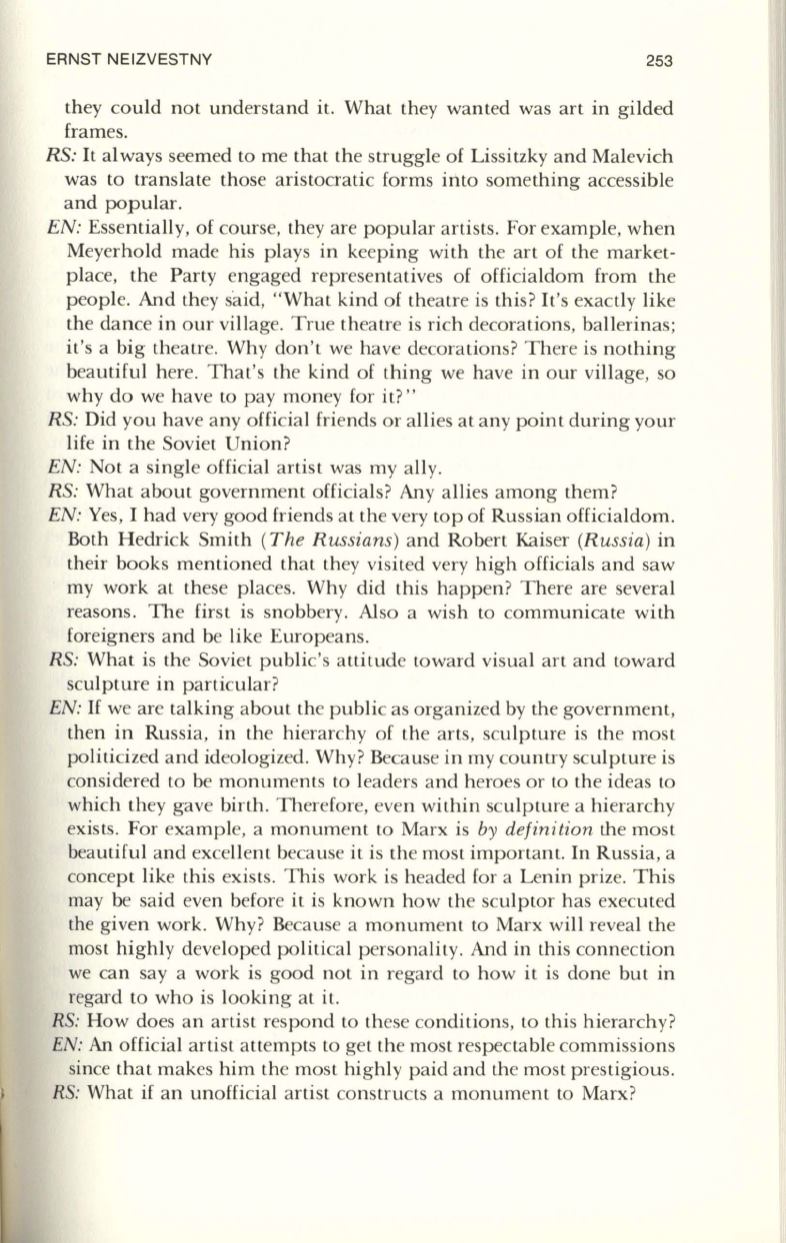
ERNST NEIZVESTNY
253
they could not understand it. What they wanted was art in gilded
frames.
RS:
It
always seemed to me that the struggle of Lissitzky and Malevich
was to translate those aristocratic forms into something accessible
and popular.
EN:
Essentially, of course, they are popular artists. For example, when
Meyerhold made his plays in keeping with the art of the market–
place, the Party engaged representatives of officialdom from the
people. And they said, "What kind of theatre is this? It's exactly like
the dance in our village. True theatre is rich decorations, ballerinas;
it's a big theatre. Why don't we have decorations? There is nothing
beautiful here. That's the kind of thing we have in our village, so
why do we have to pay money for it?"
RS:
Did you have any official friends or allies at any point during your
life in the Soviet Union?
EN:
Not a single official artist was my ally.
RS:
What about government officials? Any allies among them?
EN:
Yes, I had very good friends at the very top of Russian officialdom.
Both Hedrick Smith
(The Russians)
and Robert Kaiser
(Russia)
in
their books mentioned that they visited very high officials and saw
my work at these places. Why did this happen? There are several
reasons. The first is snobbery.
Also
a wish to communicate with
foreigners and be like Europeans.
RS:
What is the Soviet public's attitude toward visual art and toward
sculpture in particular?
EN:
If
we are talking about the public as organized by the government,
then in Russia, in the hierarchy of the arts, sculpture is the most
politicized and ideologized. Why? Because in my country sculpture is
considered to be monuments to leaders and heroes or to the ideas to
which they gave birth. Therefore, even within sculpture a hierarchy
exists. For example, a monument to Marx is
by definition
the most
beautiful and excellent because it is the most important.
In
Russia, a
concept like this exists. This work is headed for a Lenin prize. This
may
be
said even before it is known how the sculptor has executed
the given work. Why? Because a monument to Marx will reveal the
most highly developed political personality. And in this connection
we can say a work is good not in regard to how it is done but in
regard to who is looking at it.
RS:
How does an artist respond to these conditions, to this hierarchy?
EN:
An official artist attempts to get the most respectable commissions
since that makes him the most highly paid and the most prestigious.
RS:
What if an unofficial artist constructs a monument to Marx?


